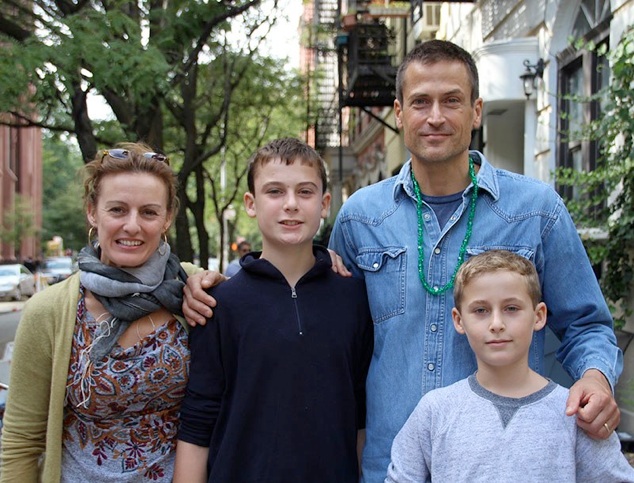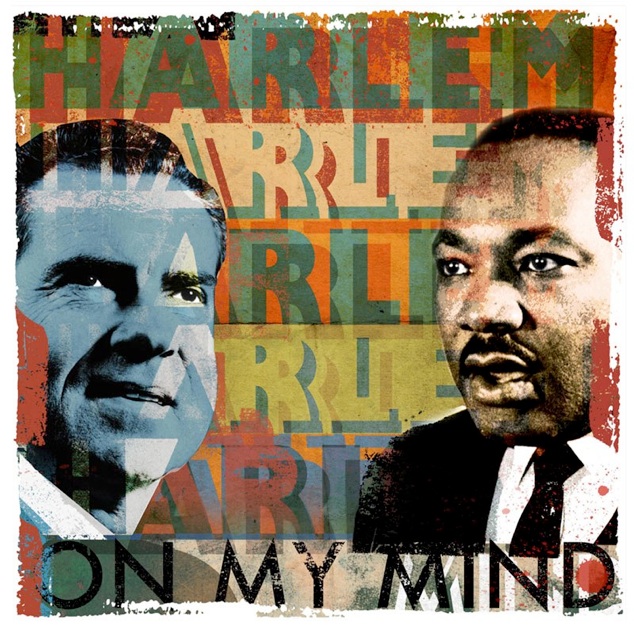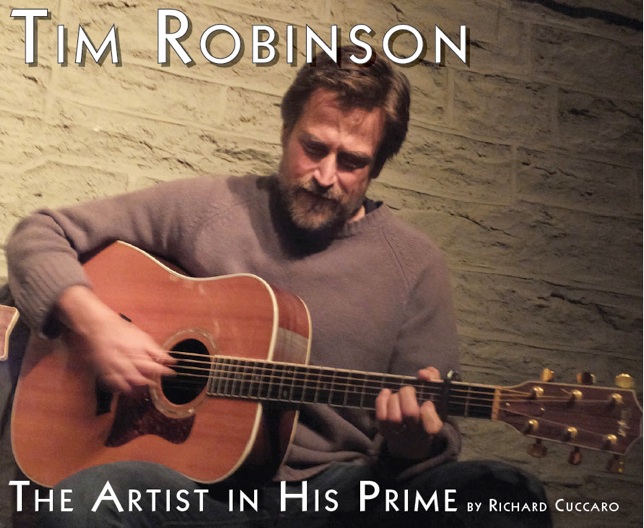There are some songwriters so adept, so brilliant, so prescient, they can feel the unease in the human spirit, all the way into the future. They write things that hover at the edge of consciousness, bleeding in every so often, like a stubborn ghost. Like now, in this season of madness.
In August 1999, Tim Robinson wrote his enduring epic song, “Out on the Edge”:
it’s not the heat, it’s the humanity
it’s the density, god damn it
it’s not the sun, it’s not the moon
at the edge of the planet
on the digital horizon
it’s the shadow of my doubts
singin’ doo wah diddy diddy dumb daddy
dig your doorway out
I’m not paranoid, I’m bitter
it’s a fine line but it works
it’s not the spin on the sound bites
it’s the smiles on these jerks
at the edge of the millennium
out here lining up their ducks
they’re singin’ doo wah daddy you’re a dinosaur and time don’t give a fuck
out on the edge… out on the edge…out on the edge … way out on the edge
I’m goin’ north, gonna wander
grow a beard and learn to hunt
learn to mumble in Canadian
act as foreign as I want
beyond the arctic circle
with an eskimo girl
we’re singin’ doo wah diddy there’s a dream dyin’
at the edge of the world / CHORUS
it’s not the mukluks, not the igloo
it’s her primitive smile
it’s not the snow, it’s the silence
can I stay with you a while
under your big fur blanket
in your oil lamp light
singin’ doo wah diddy do ya dare daddy
close your eyes tonight / CHORUS
I was introduced to the Fast Folk Musical Magazine and its offshoot, The Fast Folk Cafe, in 1995. The cafe was getting its finishing touches when I arrived and found singer/songwriter Tim Robinson still hanging sheetrock.
Fast Folk began in 1982 as a songwriter’s exchange labeled The Coop.Through the years, many singer/songwriters had recordings on Fast Folk records. Some, like Lucy Kaplansky, Suzanne Vega, John Gorka and Richard Shindell, became well-known. Others did not.
Tim Robinson, a professional illustrator with deep songwriting chops, was included in three records and illustrated several covers. He’s never been widely known, but (now-deceased) founder Jack Hardy, at one songwriter’s exchange remarked, in mock seriousness, when Tim brought in three new songs, “God, I hate that guy!” Jack knew how good Tim was (and still is). In 1999, New York Times reporter Andrew Revkin wrote: Mr. Hardy’s new song about a little boy with pirate dreams was gently dissected by Tim Robinson, a magazine illustrator from Brooklyn who is a regular at the swaps and performs almost every week at a handful of clubs that present acoustic music. Mr. Robinson, 35, questioned Mr. Hardy’s choice of a calypso beat.
Of all the many performing artists I’ve met over the years, Tim Robinson is at once the most down-to-earth, principled human being, the most poetic and multi-talented. He’s done illustrations for The New York Times (and other publications) for 25 years. He paints landscapes and still lifes in oil, writes poetry, and yes, songs, when the inspiration strikes.
Roots
Tim was born in New York City. His father had just bought a house in Croton-on-Hudson, however, and that’s where he grew up. His father’s musical curiosity extended to albums by The Beatles and Bob Dylan, plus some folk and jazz. That record collection helped to form Tim’s musical sensibilities. He began taking trumpet lessons in fourth grade. In high school, he was in a 21-piece all-star tri-state jazz ensemble sponsored by McDonald’s. They performed widely, even appearing on television. He’d also gotten a guitar and took lessons for a few years.
Tim attended Syracuse University, where he graduated with a Bachelor of Fine Arts. He had no patience for playing trumpet in support of athletic events so he dropped the trumpet. He had the guitar and used it to “mellow out,” playing along to records and noodling with folk and blues progressions. He especially liked playing songs like “The Boxer” from a Paul Simon songbook. The album, Rhymin’ Simon, also made an impact.
After graduation, he lived in New York City, mostly in Brooklyn, for 20 years. He worked for a while at the Walter Bernard/Milton Glaser studio and thereafter produced freelance design and illustration. For a number of years, Tim also was giving vent to a painterly impulse, creating abstract oils measuring 8 feet square. As apartment rents went up and spaces got smaller, he finally had to discard the paintings, leaving them on the street. Returning to a recently vacated apartment for a few last things, he saw that one of his paintings, up against a lamppost, had been touched up with graffiti. With typical self-effacing aplomb, Tim told me, “It was actually improved. I knew then that painting abstracts wasn’t for me.”
Sometime around the early ’90s, he began writing songs, having been introduced to the musical oeuvre of Steve Forbert by a friend (Bob Dylan and John Prine also had made an impression). Then, a letter to the editor in Acoustic Guitar magazine mentioned the Jack Hardy-led Songwriter’s Exchange and included Jack’s phone number. Tim called and started attending. His first songs met with some harsh critical remarks from one attendee, but, in parting, the poetic, vaunted singer/songwriter Frank Tedesso praised one of Tim’s songs and it made a huge difference. “I was happy to come back,” he told me. Tim began playing at East Village places like The Sidewalk Cafe, Sin-é and Hotel Galvez (the latter two are now defunct). He had already been included in a few Fast Folk Musical Magazine recordings by the time I stumbled onto the scene. Over the years, he’s also applied his artistic skills to some of the covers.

Tim attended the Monday night song swaps faithfully over the years, and accompanied Jack Hardy to the annual Kerrville (Texas) Folk Festival, a songwriter’s mecca, on three occasions, and to Falcon Ridge Folk Festival (N.Y.), another annual songwriter’s retreat, for a number of years. He’d join other writers around the fire at Jack’s “Pirate Camp.” Jack Hardy died in 2011. His songwriter’s exchange has been kept alive in the East Village by Kathryn Bloss, (who also runs a house concert series in the same location, entitled Kathryn’s Space — see our listings). Tim participates in the songwriter’s exchange at least once or twice a year. The rest of the time he writes on his own and, as mentioned previously, works at illustration or paints.
Audio filesTim sent me of recent unpublished songs display a continuing mastery of the magic of poetry and melody, such as in “Recall the Tanager:” Recall the tanager, blinding, a scarlet blur / Vivid, the messenger, blessed, and isn’t our / Time but an instant here, gone with a distant cry / Why do we drift on the past, can you tell me, why? …
More of Tim’s songs can be heard at: https://soundcloud.com/tim-robinson. His writing covers a wide range of subjects. I found “The Gun in Our Home,” his take on the failure of Congress to enact gun control laws, particularly eloquent: where is the death count filed up on Capitol Hill? / between our happiness pursued and our license to kill / it’s a question of will …
Tim’s digital collages, viewable here: https://www.behance.net/TimRobinsonCollage, shows an astonishing array of subject matter and a virtuosic command of composition and color.
His poetry can be found here: http://timrobinsonpoems.blogspot.com/.
This is one of my favorites:
44. (for climber John Ewbank, who died after a surgery)
so it turns out your fall
was no accident
that nearing the end of the final pitch
you turned, and the beauty below
was greater now than / any above
so you loosened your grip
as we all will, and dropped back
against the deep, wild years
a fragrant wind blew across your face
the sun splashed gold
on the endless rock
and that was
that
These days, Tim lives with his wife and two sons in the house in which he grew up (he bought it from his father, who needed to move). He watches his sons climb the same trees he climbed, swim the same pond and fish the same waters. I can think of no greater achievement than the life he has carved out. No amount of fame could mean as much.
Website: http://www.timrobinson.cc



